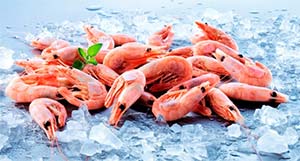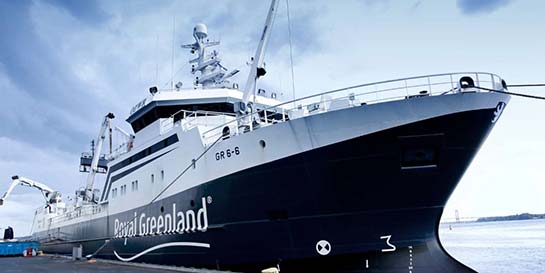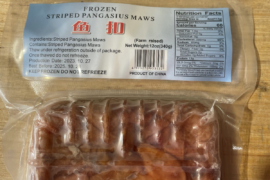Business continues to fare well for Royal Greenland, as the Nuuk-headquartered seafood production company recently reported that revenues and profit are rising despite shipping challenges and lingering weakness in the pound sterling exchange rate following the Brexit vote signaling the United Kingdom’s prospective withdrawal from the European Union.
Sales grew by 9% during the first half (H1) of 2017, up from DKK 2.4 billion in 2016 to DKK 2.6 billion. Profit before tax improved from a loss of DKK 7 million in H1 2016 to a profit of DKK 32 million during the same period this year.
The net profit for H1 2017 totaled DKK 1 million, compared to a loss of DKK 12 million last year. Interest-bearing debt has been reduced by DKK 23 million, and is on a par with last year. The first two installments of the investment in the two new trawlers have been paid. Equity amounts to DKK 1.3 billion, with an equity ratio of 31.8%.
 The positive development in profit is particularly due to the company’s core products – shell-on prawns and snow crab. However, sales of prawns in brine, lumpfish roe and smoked fish are also growing. In particular, the strong markets in Asia and North America as well as high sales in Scandinavia have been having a positive impact on results.
The positive development in profit is particularly due to the company’s core products – shell-on prawns and snow crab. However, sales of prawns in brine, lumpfish roe and smoked fish are also growing. In particular, the strong markets in Asia and North America as well as high sales in Scandinavia have been having a positive impact on results.
Even though Greenland halibut products packed at the company’s land-based factories have been challenged by operational problems at Royal Arctic Line, Greenland halibut output is meeting demand as trawler-produced products have compensated for the missing volumes.
Moreover, the company’s core business in cooked and peeled prawns has been challenged by falling sales prices, especially for the smaller sizes. The drop in the value of pound sterling in recent months has also had a negative impact on the interim financial results with DKK 18 million.
Sales of white fish, which primarily comprises Greenland cod, and which, like Greenland halibut, has suffered from delayed shipping, have fallen by 5% relative to the prior-year period.
Outlook for 2017
The profit before tax for the entire year is expected to be on a par with FY 2016, even though several of the main currencies in which Royal Greenland sells its products – including the Japanese yen and US dollar, in addition to pound sterling – have fallen significantly relative to the Danish krone and the euro.
The company has a total of 48 production sites in Greenland, Canada and Europe, as well as a fishing fleet consisting of six offshore ocean going vessels and nine inshore coastal vessels. Along the west coast of Greenland it has 38 plants and facilities, including large factories running two or three shifts per day. The operations in Greenland mainly pack prawns, Greenland halibut, cod, crab and lumpfish roe. The plants’ activities range widely, from the production and packaging of finished products to the packaging of intermediate products for further processing in Asia or Poland, as well as block freezing and salting.






